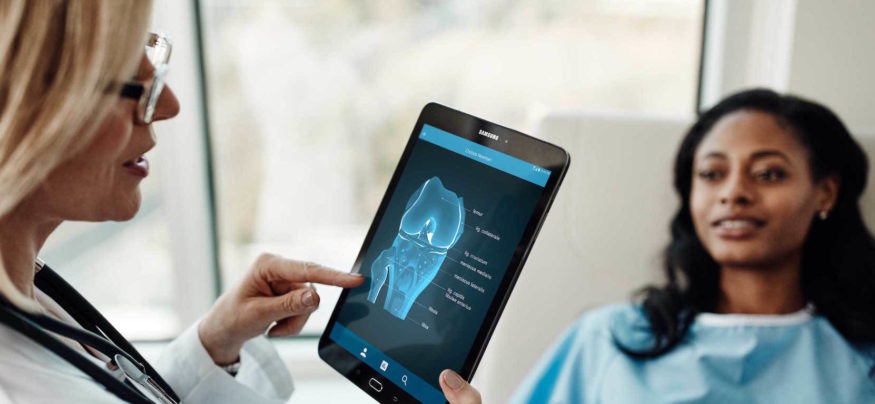Electronic health records (EHRs) have come to represent the face of digital health technology to most physicians, but the dissatisfaction and frustration that physicians have experienced with EHRs is widespread. There are many things that physicians want but aren’t getting from their EHRs, such as communication and scheduling platforms, patient management, remote monitoring and reference tools. Security and privacy when using devices at work are major concerns as well in the healthcare space. Below are five ways mobile can improve the way doctors deliver care:
- Security and privacy. Physicians frequently use smartphones to access patient records, as well as for communications throughout the day in both their professional and personal lives. With this in mind, healthcare presents unique considerations with regards to mobile privacy, security and keeping patient information safe. It’s important that application use policies are created and enforced, especially when it comes to facilities with BYOD policies. Containerization solutions, such as Samsung’s KNOX Workspace, allow care providers to separate their work and personal data on one device.
- Patient scheduling tools. Both patients and physicians recognize the value of device-based appointment scheduling tools. Physicians are looking for tools that automate the scheduling process to decrease costs and no-shows. ZocDoc, an app-based tool that connects patients to the medical office, allows patients to make appointments online and helps practices to publicize their services and offer reminders. It’s been shown to decrease no-show rates and allows for seamless booking of open and canceled appointments.
- Patient management medical apps. Apps that allow patients to follow and share data about their medical conditions, whether diabetes, asthma/COPD or heart health, are becoming commonly used by physicians. Patient management medical apps must also be able to connect to EHRs.
- Remote patient monitoring. Longer-term data trends on weight, blood pressure, glucose measurements, heart rates and other parameters are often more valuable than snapshots obtained via periodic office visits, and can lead to better care and patient safety. For example, patients can view their insulin pump data on their smartphones, and wirelessly transmit data from implantable pacemakers and defibrillators. Remote patient monitoring is now available to physicians via mobile devices as well.
- Reference tools, journals and continuing education. Another common use of mobile tools by physicians is for reference purposes. Medical reference data, textbooks, journal articles and sources of continuing medical education are more convenient and efficient to use when they can be accessed via mobile devices.
Physicians are technophiles. They’re also people whose lives outside medicine are significantly affected by mobile innovation. Healthcare is late to the game when it comes to technology because of its risk-averse culture and unique regulatory and business models. However, both patients and providers want healthcare to catch up when it comes to opportunities to add convenience and improve care.
How are you using mobile technology to better deliver patient care? Leave a comment below or check out our healthcare solutions page to learn more.







